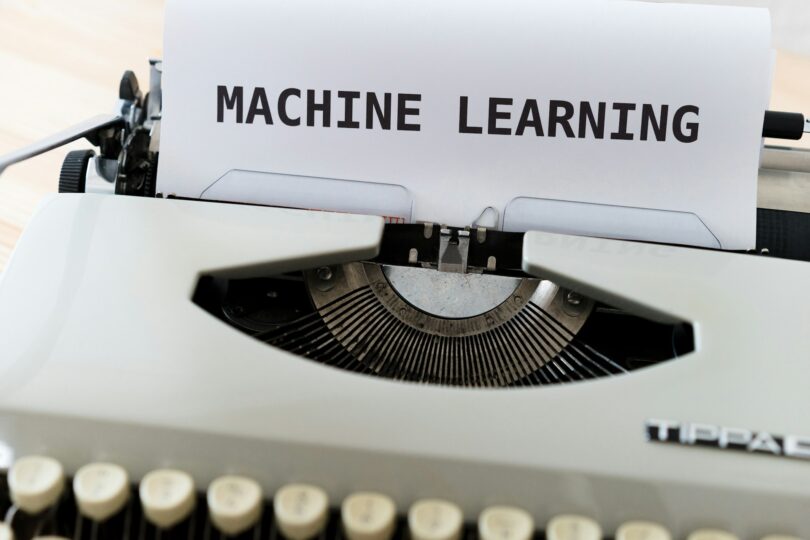The Role of Machine Learning in Modern Software
In the digital age, software is no longer a static tool; it is becoming an intelligent assistant, capable of Machine Learning, adapting, and making decisions. This transformation has been made possible through the integration of Machine Learning (ML) into modern software development. ML, a subset of Artificial Intelligence (AI), allows software to learn from data and improve over time without being explicitly programmed for every scenario.
This article explores how ML has reshaped software development, the key domains it influences, its benefits, the challenges involved, and the future landscape of software empowered by ML.
Understanding Machine Learning
Machine Learning is the science of getting computers to learn and act based on data. At its core, ML uses statistical techniques to enable machines to improve their performance with experience. ML algorithms can be broadly categorized into:
-
Supervised Learning: Learning from labeled data (e.g., classification and regression).
-
Unsupervised Learning: Learning from unlabelled data to find hidden patterns (e.g., clustering).
-
Reinforcement Learning: Learning optimal actions through trial and error to maximize rewards.
In the software domain, these algorithms are integrated to enable smart behavior — from recognizing images to recommending products.
How Machine Learning Is Integrated into Software
Modern software is becoming more intelligent through the seamless incorporation of ML models and systems. The integration happens across various phases:
1. Smart Front-End Interfaces
Software applications now utilize ML to enhance user interaction. For instance:
-
Voice Assistants (e.g., Siri, Alexa): Use Natural Language Processing (NLP) to understand spoken queries.
-
Chatbots: Incorporate ML to provide human-like conversations and automated customer support.
-
Personalized UI: Software adjusts its interface based on user behavior using predictive analytics.
2. Backend Intelligence
The backend of many applications now includes ML capabilities to:
-
Detect fraud in real-time
-
Analyze customer sentiment
-
Forecast demand
-
Optimize resources
These models are deployed on servers, accessed through APIs, or run locally using libraries like TensorFlow, PyTorch, or Scikit-learn.
3. Continuous Learning and Model Updates
With MLOps (Machine Learning Operations), software systems are designed to continuously update and improve ML models. This ensures that predictions remain accurate even as new data flows in.
Applications of ML in Modern Software
The applications of ML span nearly every software category. Below are key areas where ML plays a pivotal role:
1. Recommendation Engines
Companies like Netflix, Amazon, and Spotify rely on ML-based recommendation systems to enhance user engagement. These systems analyze past behavior to suggest new content, improving the user experience and increasing revenue.
2. Search Engines and Information Retrieval
Search engines like Google use ML to interpret queries, rank web pages, and deliver personalized results. ML helps in understanding user intent through semantic search, query reformulation, and ranking optimization.
3. Cybersecurity and Threat Detection
Modern cybersecurity tools are powered by ML to detect anomalies and identify potential threats in real-time. ML algorithms can learn the normal behavior of users and systems, flagging anything unusual as potentially malicious.
4. Predictive Analytics
In business software (CRM, ERP, etc.), predictive analytics helps in decision-making by forecasting sales trends, customer churn, or equipment failures. This proactive approach boosts operational efficiency and customer satisfaction.
5. Image and Speech Recognition
Applications in healthcare (e.g., diagnosing diseases from X-rays), security (e.g., facial recognition), and communication (e.g., speech-to-text) rely heavily on ML algorithms for interpretation and classification of visual or audio data.
6. Autonomous Systems
From self-driving cars to robotic process automation (RPA), software is being equipped with the ability to act autonomously. ML is the core driver behind these innovations, enabling systems to make real-time decisions based on environmental data.
Benefits of ML-Driven Software
The integration of ML into software offers numerous advantages, both for users and developers.
1. Improved User Experience
Personalization, faster responses, and context-aware assistance all contribute to more engaging and user-friendly applications.
2. Automation of Complex Tasks
Repetitive and complex decision-making processes can be automated, saving time and reducing human error. For instance, spam filtering in emails or dynamic pricing in e-commerce platforms.
3. Enhanced Decision Making
By analyzing vast amounts of data, ML-driven software provides actionable insights, enabling better strategic decisions in fields like marketing, logistics, and finance.
4. Scalability and Adaptability
ML allows software to adapt to new data and changing environments without manual intervention, making systems more scalable and future-proof.
Challenges and Limitations
Despite its advantages, integrating ML into software also brings several challenges:
1. Data Dependency
ML models require large volumes of quality data. Insufficient or biased data can lead to inaccurate predictions and unintended consequences.
2. Complexity in Development
Building ML-driven applications is more complex than traditional software. It involves model training, validation, deployment, and monitoring — often requiring cross-functional teams.
3. Ethical and Privacy Concerns
ML systems can inadvertently learn and propagate biases present in training data. Also, the use of personal data in training models raises privacy and compliance issues (e.g., GDPR).
4. Resource Intensive
Training ML models can be computationally expensive, requiring powerful hardware like GPUs and extensive cloud infrastructure.
Read More: Top 7 AI Tools That Boost Productivity
Machine Learning Tools and Frameworks for Software Development
To address the complexity, a variety of tools and frameworks have emerged:
-
TensorFlow and PyTorch: Leading deep learning frameworks for building and deploying ML models.
-
Scikit-learn: Popular for classical ML algorithms in Python.
-
MLflow and Kubeflow: Tools for managing the ML lifecycle, including experimentation, reproducibility, and deployment.
-
ONNX: An open format for representing ML models, facilitating interoperability across frameworks.
-
AutoML platforms: Such as Google AutoML, H2O.ai, which enable developers with minimal ML expertise to create models automatically.
These tools help democratize ML and make its integration into software more accessible.
MLOps: Bridging Software Engineering and Machine Learning
Machine Learning Operations (MLOps) is an emerging discipline focused on unifying ML system development (Dev) and ML system operations (Ops). MLOps brings:
-
Version control for datasets and models
-
Automated model training pipelines
-
Continuous Integration/Deployment (CI/CD) for ML models
-
Monitoring and feedback loops to ensure performance over time
Adopting MLOps allows organizations to deploy ML models more reliably and scale efficiently in production environments.
Real-World Case Studies
1. Netflix
Netflix uses ML extensively for content recommendation, streaming optimization, and even content creation. Its recommendation algorithm is responsible for over 80% of user activity on the platform.
2. Tesla
Tesla integrates ML in its software stack for autonomous driving. The car’s onboard software collects driving data, which is used to train and improve its neural network models.
3. Google Maps
Google Maps utilizes ML to predict traffic patterns, estimate ETAs, and suggest alternate routes, improving navigation experiences globally.
4. Grammarly
Grammarly uses ML and NLP to detect grammar mistakes, offer stylistic suggestions, and provide writing assistance in real-time.
The Future of ML in Software Development
The role of ML in modern software is expected to grow exponentially. Key future trends include:
1. AI-First Software Architecture
Software will be designed with intelligence as a core capability rather than an afterthought. Systems will be built to learn, reason, and adapt from the start.
2. Edge ML
ML models are increasingly being deployed on edge devices (e.g., smartphones, IoT devices), enabling real-time predictions without cloud dependency.
3. Explainable AI (XAI)
As ML becomes more integrated into critical systems (like healthcare or finance), the need for transparency grows. XAI aims to make ML decisions understandable to humans.
4. Low-Code/No-Code ML Platforms
These platforms will allow non-technical Machine Learning users to build intelligent applications, democratizing access to ML-driven solutions.
5. Cross-disciplinary Fusion
ML will increasingly integrate with Machine Learning other emerging technologies like blockchain, quantum computing, and AR/VR, unlocking entirely new software capabilities.
Conclusion
Machine Learning has fundamentally transformed the landscape of modern software. From enhancing user experiences to enabling automation and intelligent decision-making, ML is no longer optional — it’s becoming a necessity.
However, as with any powerful technology, it brings challenges that require thoughtful design, ethical considerations, and robust operational practices. As the ecosystem matures, developers, data scientists, and organizations must collaborate to build responsible, scalable, and impactful ML-powered software.
The future of software is intelligent, adaptive, and data-driven — and Machine Learning is at its core.







